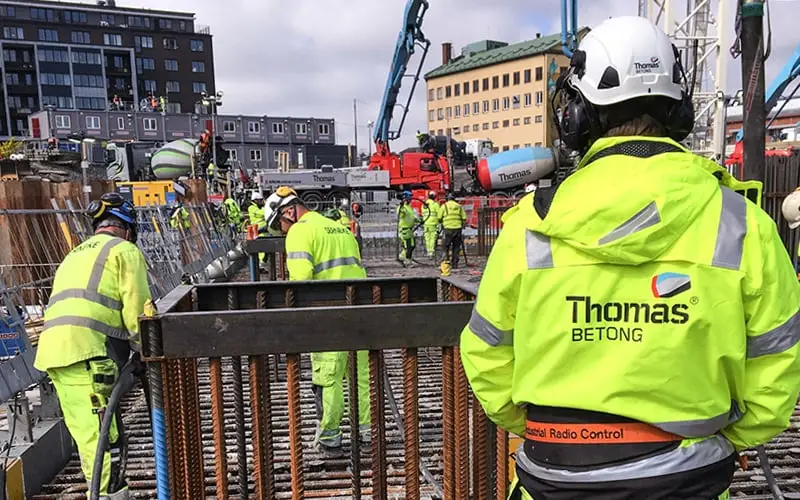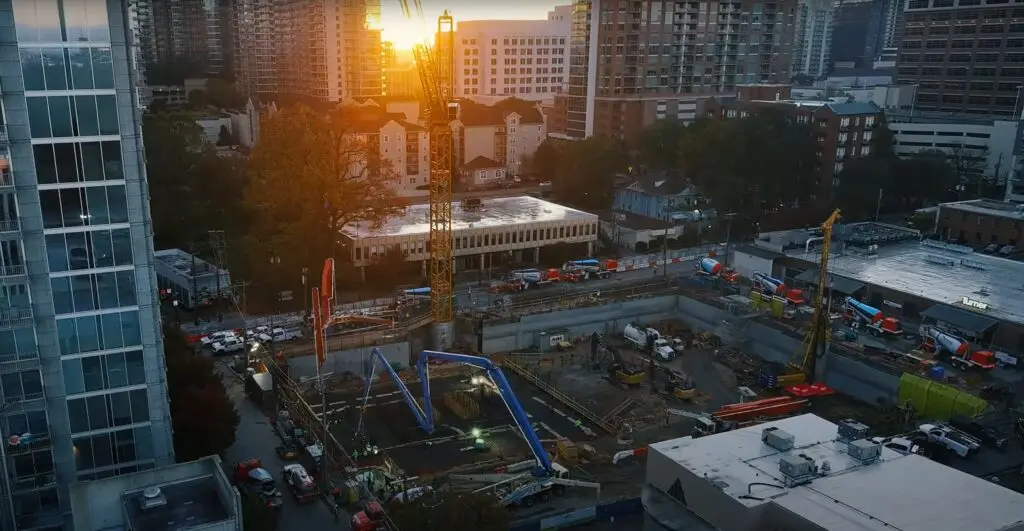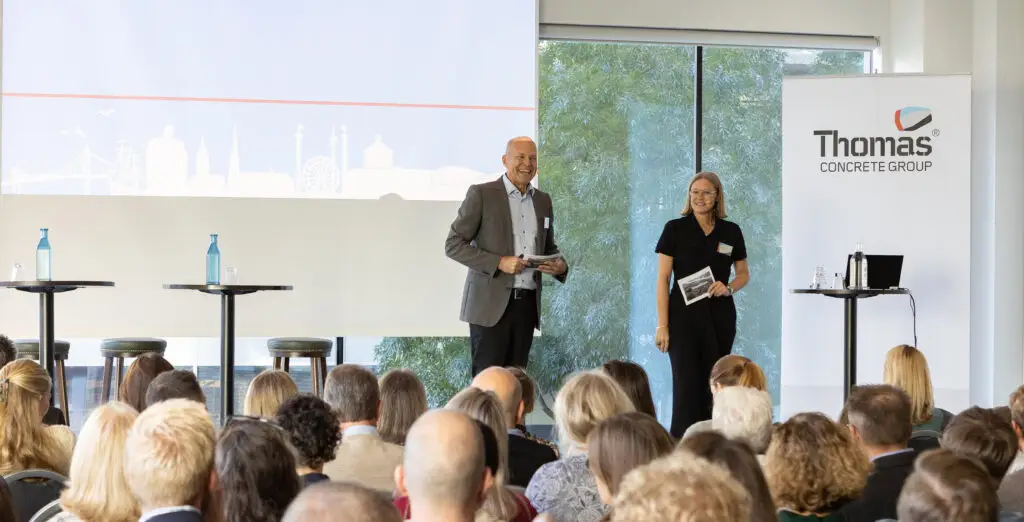Karlatornet is not just a new landmark in Gothenburg but also a project that has placed entirely unique demands on the construction. The foundation is a clear example of how innovation, expertise, and dedication can elevate a construction project to new heights. Contributing to the construction of the tallest building in the Nordics is a source of both motivation and pride for us at Team Thomas.
Specially developed concrete for tough demands
The combination of Karlatornet’s impressive height and Gothenburg’s challenging ground conditions has meant that the project has focused heavily on creating a safe and stable foundation. It is no exaggeration to say that the concrete for Karlatornet’s foundation is something out of the ordinary. To meet the tough demands placed on both the strength and pumpability of the concrete, around 30 different concrete compositions were developed, tailored to various construction parts as well as temperatures and weather conditions.
With its 50-70 meter long piles, anchored deep into the bedrock, combined with a massive base plate, the foundation has been designed to withstand enormous forces from both the overlying building and the wind load.
In addition to the concrete for the drilled piles being high-strength to withstand enormous stresses over time, it also needed to be adapted for the long pouring time and have good workability for at least 10-12 hours. The chosen concrete was also self-compacting, making it possible to achieve a dense and stable casting without external vibration.

Innovation and sustainability in focus
To reduce environmental impact, low-carbon concrete was used, where parts of the cement were replaced with slag. This adaptation gave the concrete both high strength, improved workability, and reduced heat development.
“Just for the base plate, a saving of 428 tons of carbon dioxide was achieved”, says Jonas Davidsson, Sales Manager at Thomas Betong.
The project shows how the right expertise and sustainable material choices can make a big difference for both the environment and the quality of the building. Sustainable construction has been a guiding principle in the project – not only by reducing carbon dioxide emissions but also by creating long-term sustainability in both quality and construction.

Tests and trial castings to ensure the right qualities and properties
Throughout the construction process, tests were conducted using advanced equipment, such as the Bauer Concrete Filter Press, for precise quality control.
“Thanks to tests and trial castings, we were able to ensure the quality and properties of the concrete. This way, we could guarantee that the concrete was optimally adapted to the project’s requirements and capable of withstanding the stresses it will be subjected to, both during and long after the construction process”, says Ingemar Löfgren, Head of Research and Development at Thomas Concrete Group.

The next part of the story about Karlatornet is about how the concrete was pumped to 246 meters above sea level – a new challenge where we, as the Concrete Specialists, have adapted our solutions to meet the project’s high demands.


